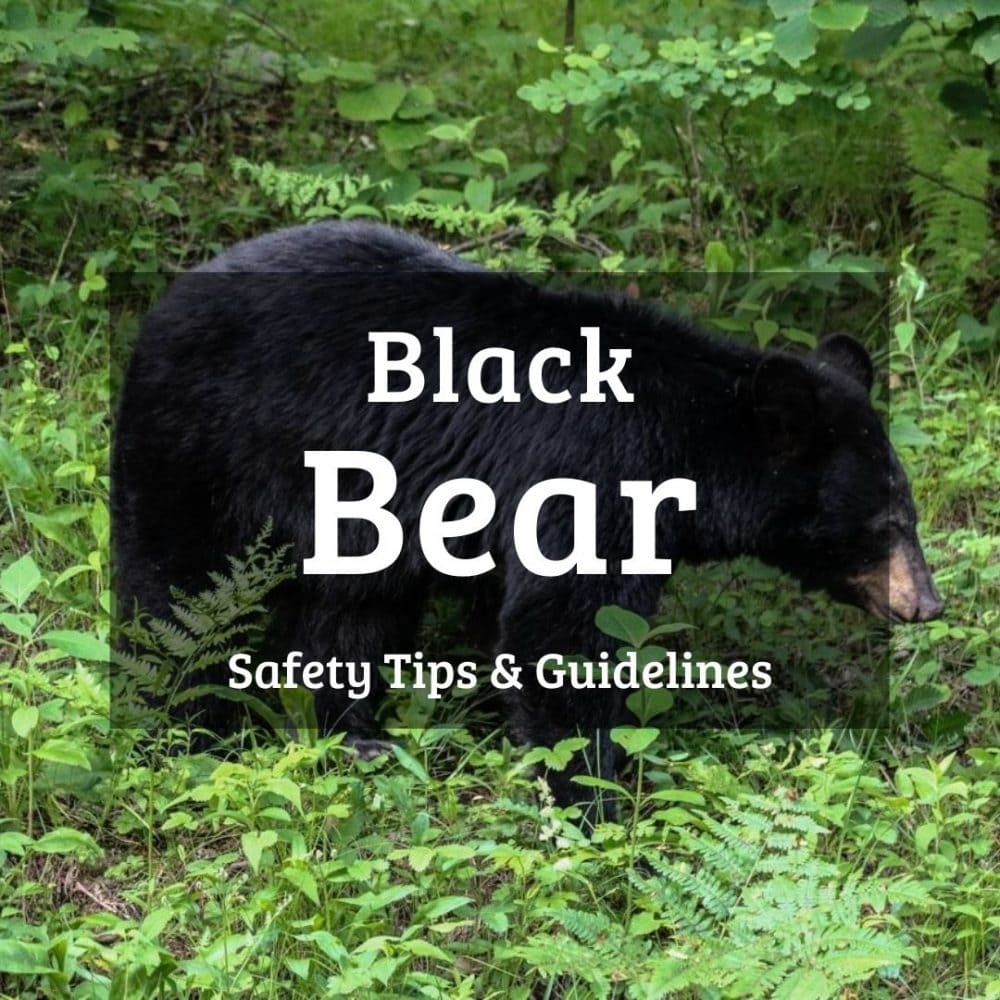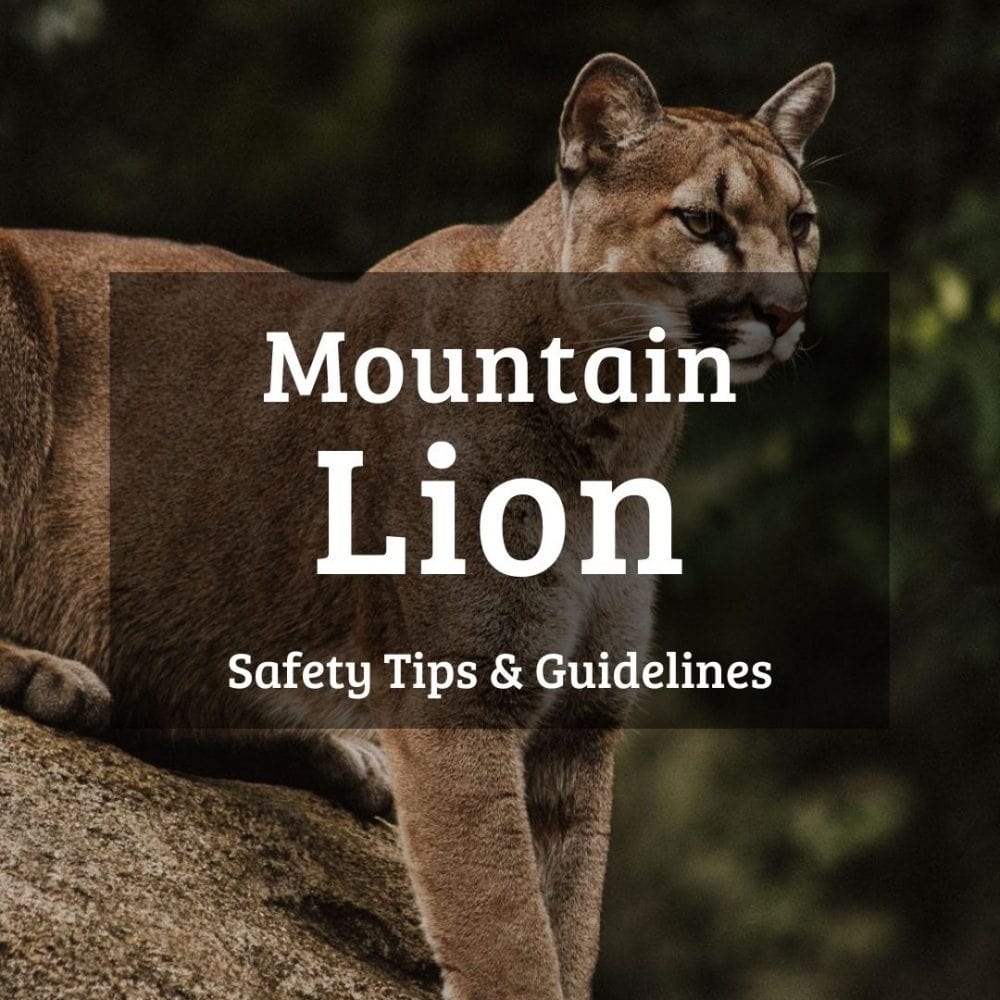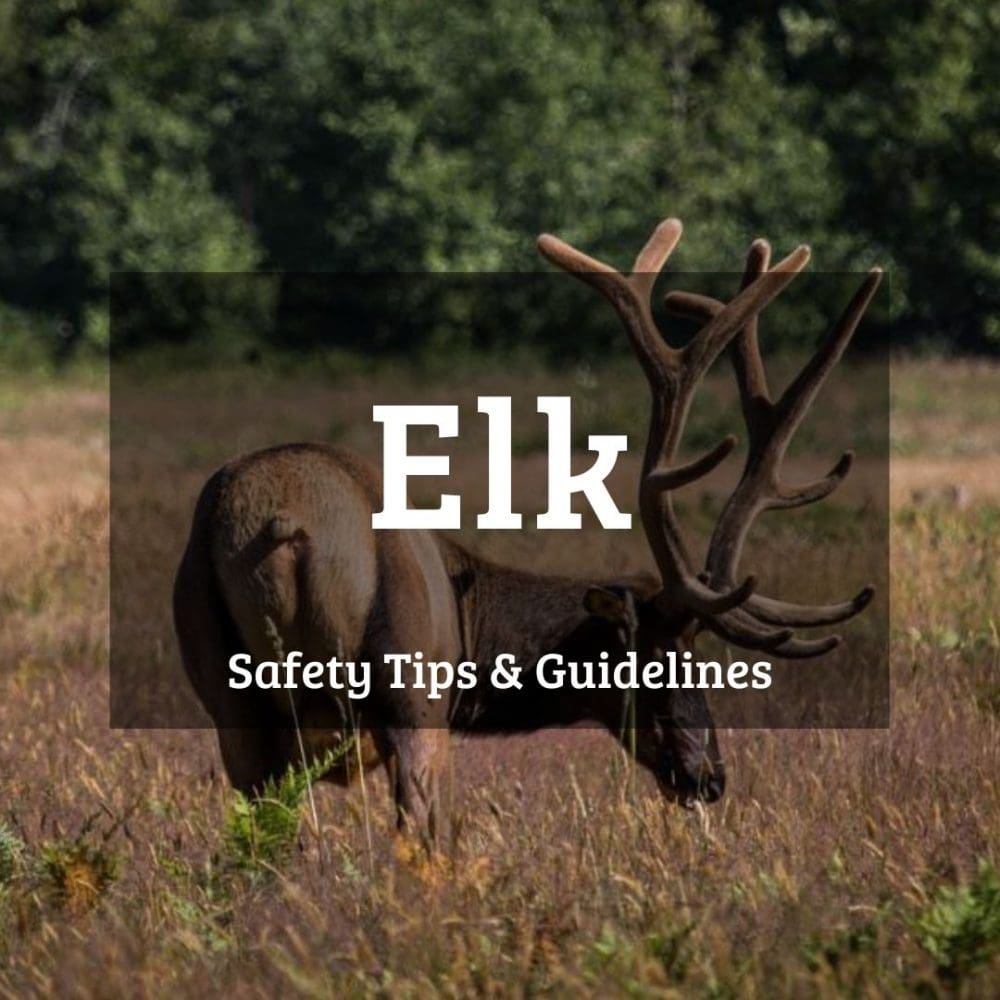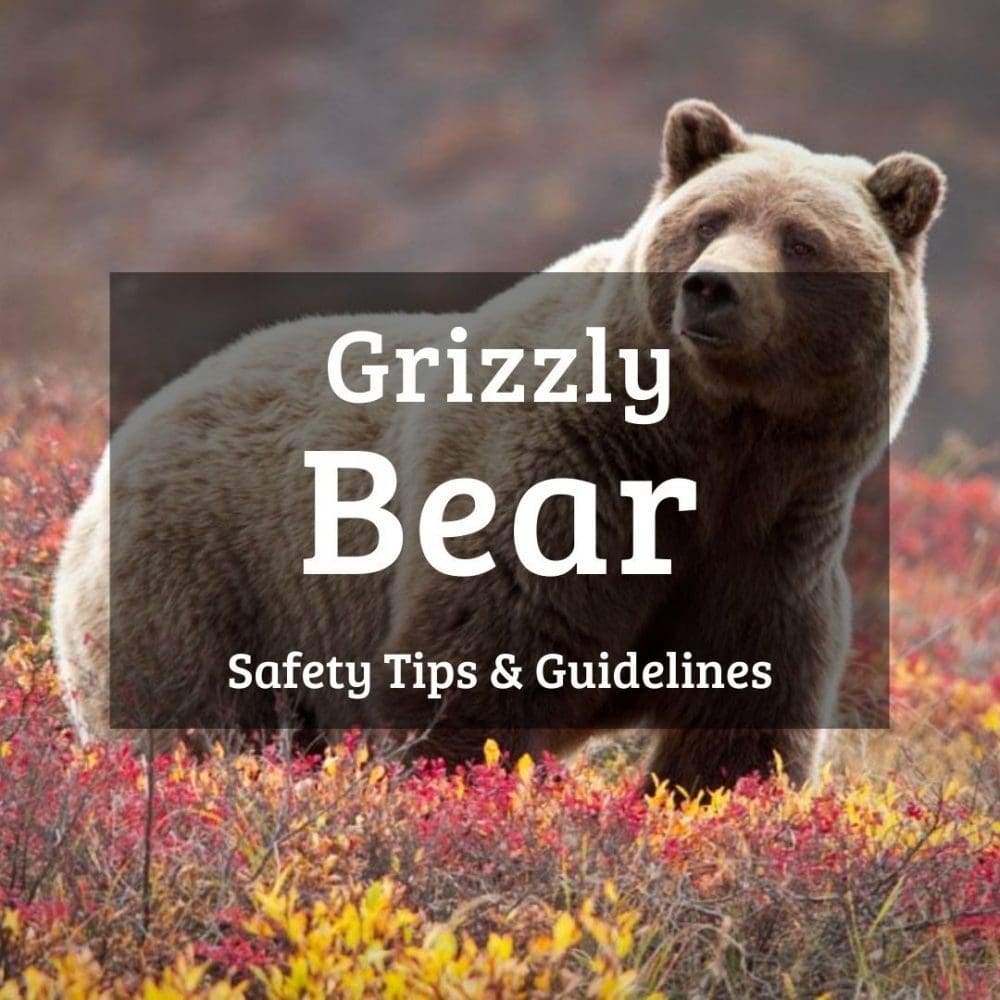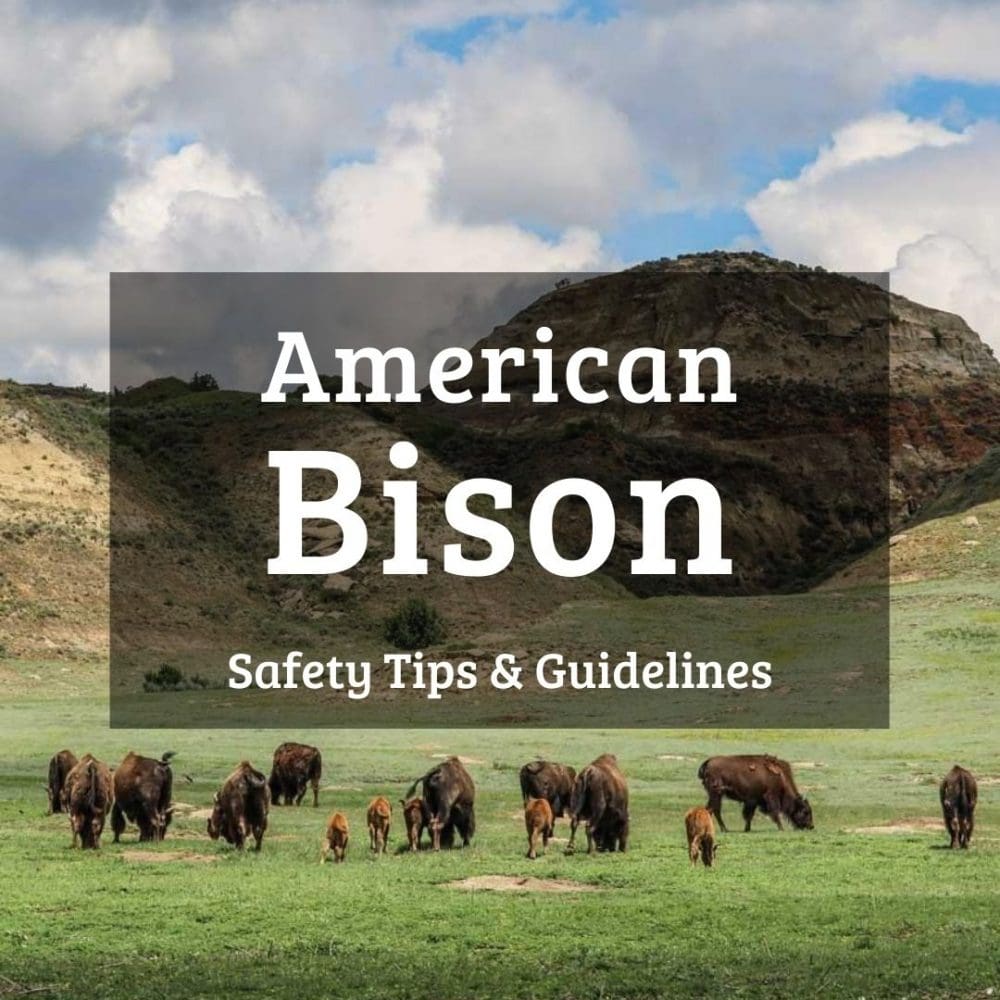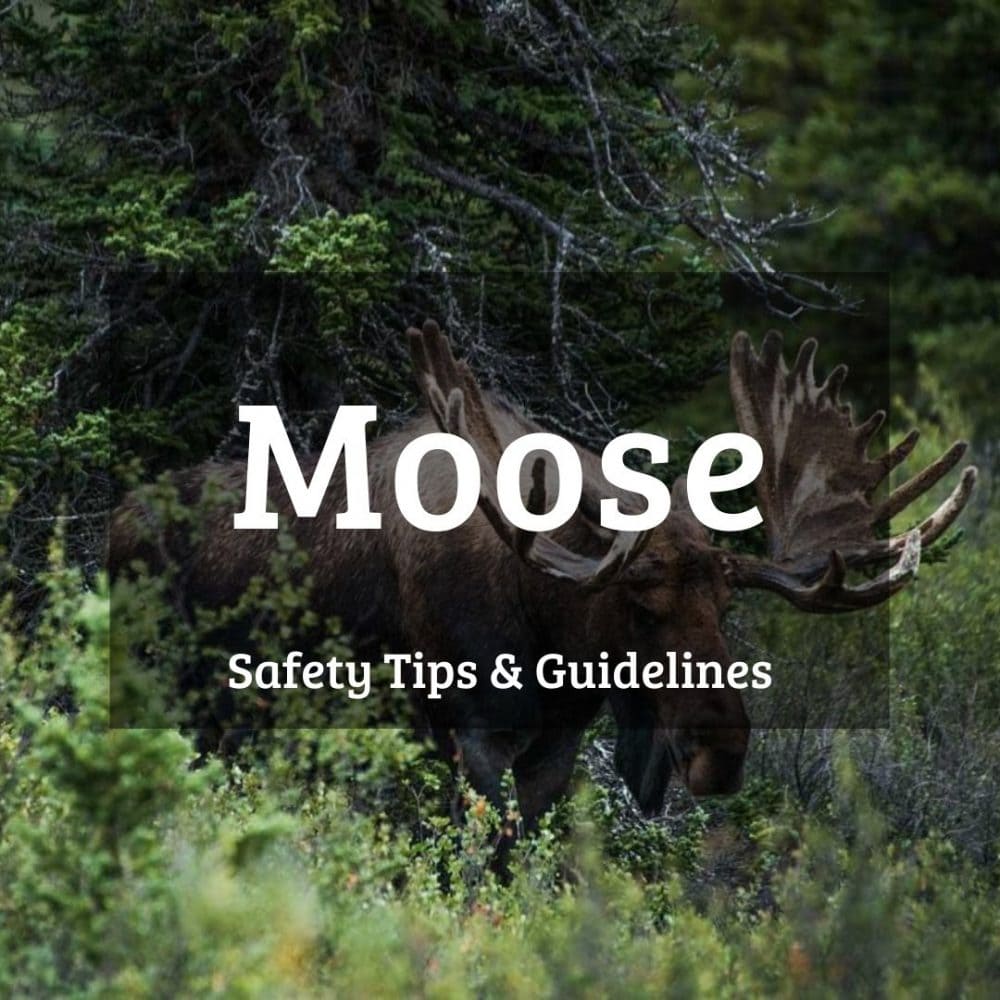One of the main reasons tens of millions of people flock to America’s national parks each year is to see iconic animals in the wild. Protecting a wide range of landscapes, ecosystems and habitats, the national parks are home to essentially all famous mammals in North America.
Below, you can see many of the most iconic mammals that call the national parks home. From cunning coyotes, whistling marmots and prancing pronghorn to fearsome bears, wandering wolves and burly bison, immerse yourself in the magnificent world of national park mammals.
Contents
14 Iconic Mammals That Call the U.S. National Parks Home
This post about iconic mammals in the national parks contains affiliate links. You can read more about our Terms of Use / Disclosure here.
1. Roosevelt Elk
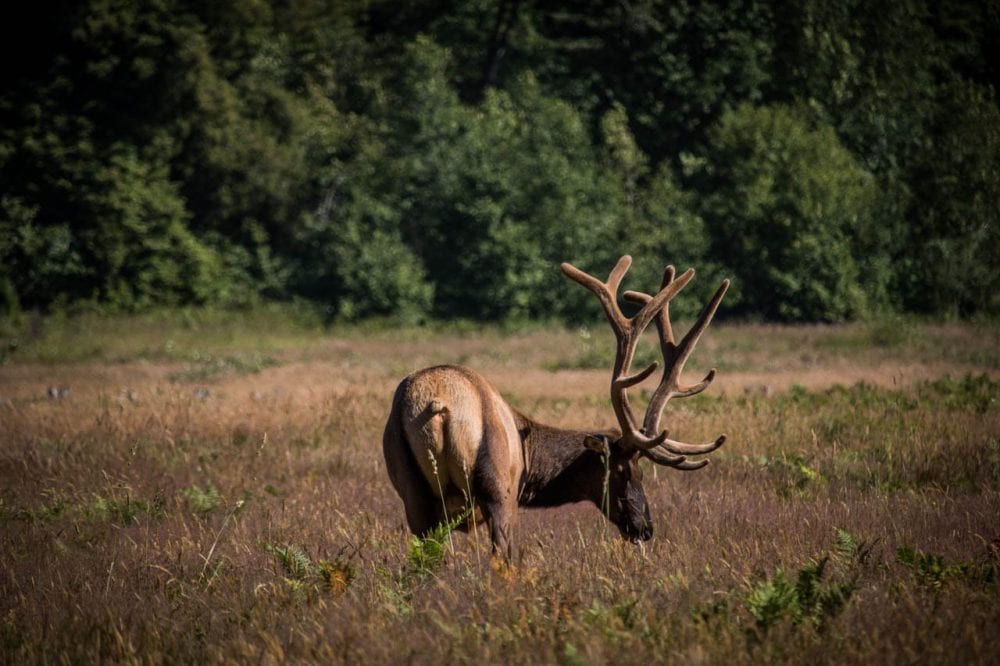
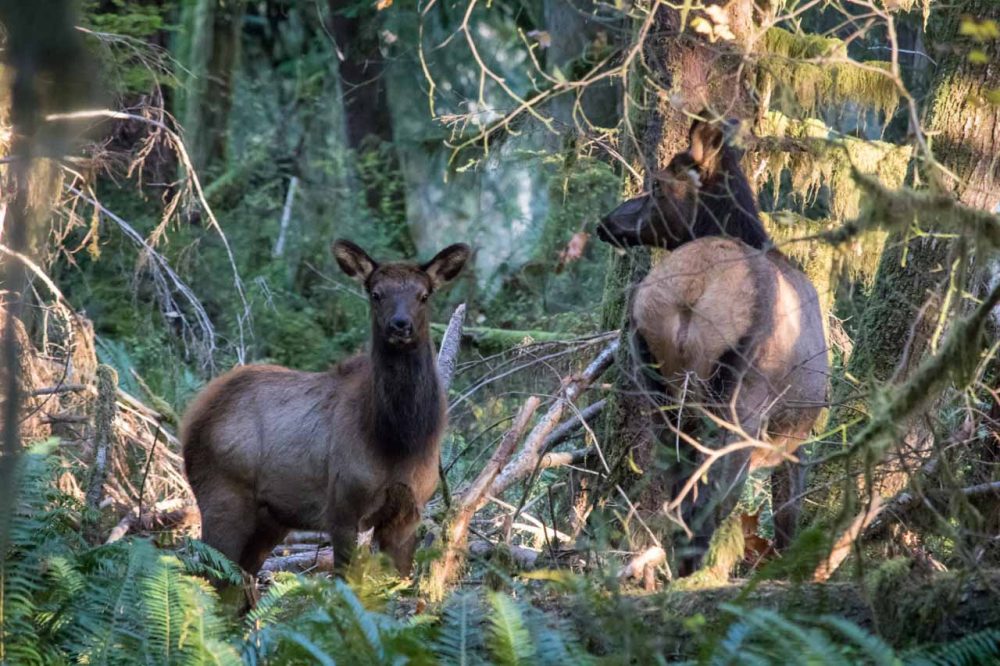
Named after President Theodore Roosevelt, the Roosevelt elk (Cervus canadensis roosevelti) is the largest of the four subspecies of elk in North America. These majestic animal is also one of North America’s biggest terrestrial mammals, with mature bulls weighing up to 1,200 pounds.
Roosevelt elk are native to the Pacific Northwest, including Washington, Oregon and parts of northern California, where they live in temperate rain forests and coastal woodlands. Sometimes, they’re also called Roosevelt’s wapiti and Olympic elk.
Other elk subspecies you may encounter in the national parks are Tule elk and Rocky Mountain elk. You’ll find those in the Appalachian Mountains, the Rocky Mountains national parks, the Southwest and California.
National Parks Where You Can See Roosevelt Elk
- Crater Lake National Park, Oregon
- Olympic National Park, Washington
- Redwood National Park, California
2. Coyotes
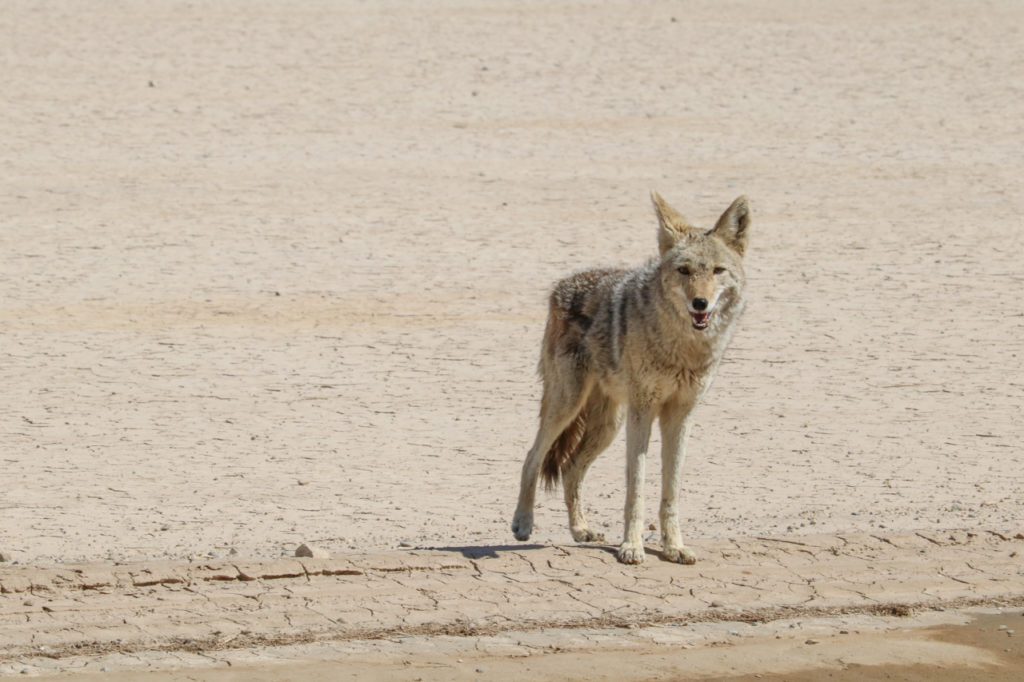
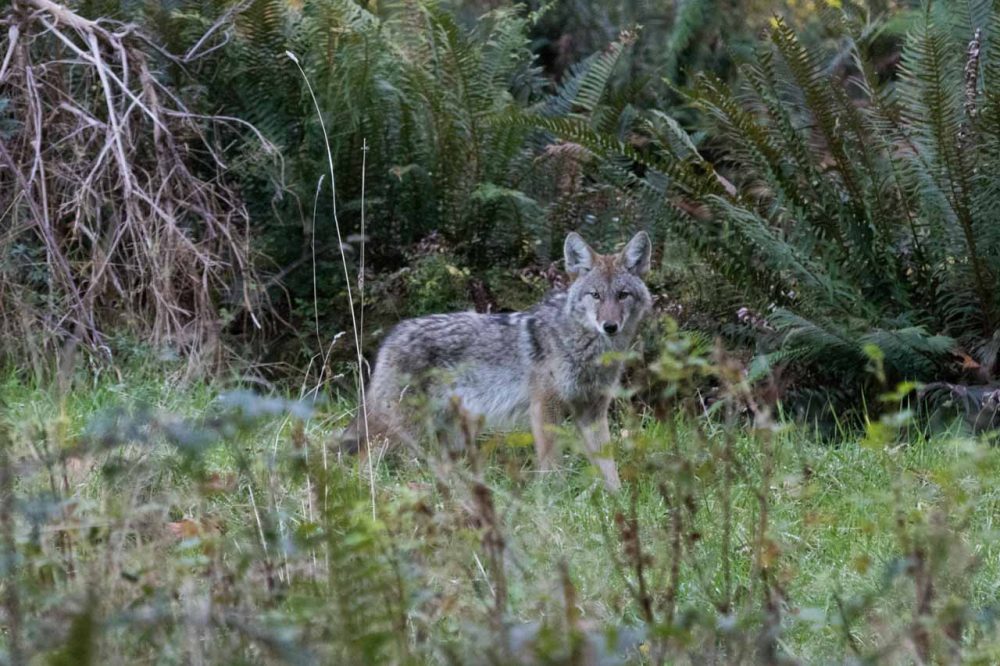
A close relative of the gray wolf, red wolf and eastern wolf, coyotes (Canis latrans) are slightly smaller but much more widespread. Native to North America, coyotes play a prominent role in many Native American stories and legends, often as a cunning trickster.
They usually live and hunt in packs and are known for their curiosity and vocality. When camping in the national parks, it’s not unusual to hear them bark, howl and yip in the twilight hours.
There are nineteen recognized subspecies of coyote, each occupying its own region in North America, although those may overlap.
Historically, in pre-Columbian America, they lived primarily in the Southwest and Great Plains regions. Although originally not present in the eastern United States, they’re now found almost everywhere in the country, including East Coast parks like Shenandoah and Great Smoky Mountains.
You can see this iconic mammal in the majority of U.S. national parks, especially in the American West.
National Parks Where You Can See Coyotes
- Death Valley National Park, California
- Great Smoky Mountains National Park, North Carolina and Tennessee
- Joshua Tree National Park, California
- Olympic National Park, Washington
- Rocky Mountain National Park, Colorado
- Shenandoah National Park, Virginia
- Yellowstone National Park, Montana, Idaho and Wyoming
- Yosemite National Park, California
- Zion National Park, Utah
- …
3. Marmots
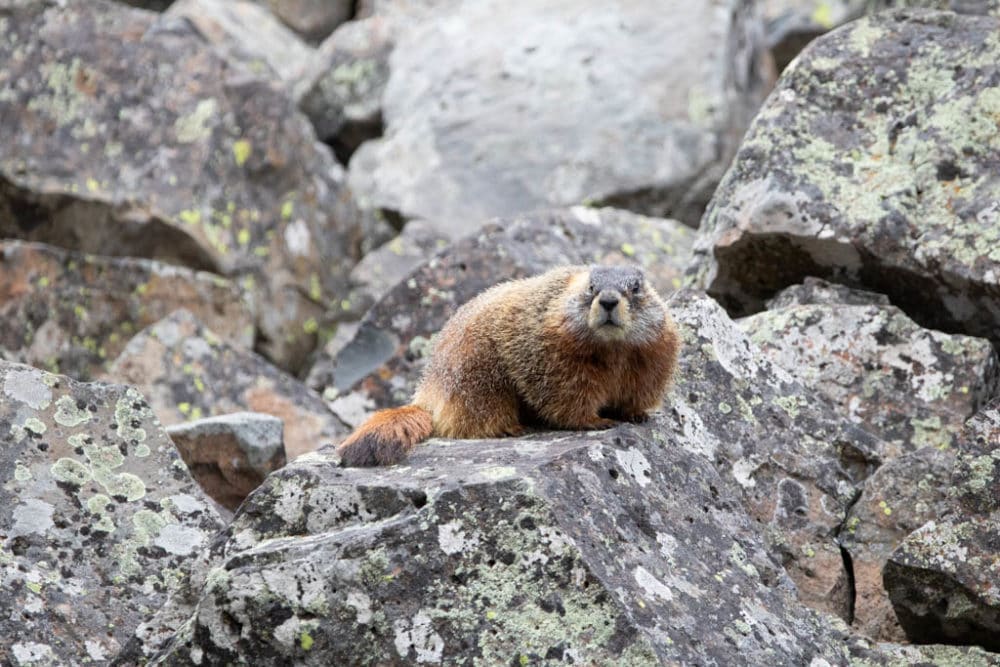
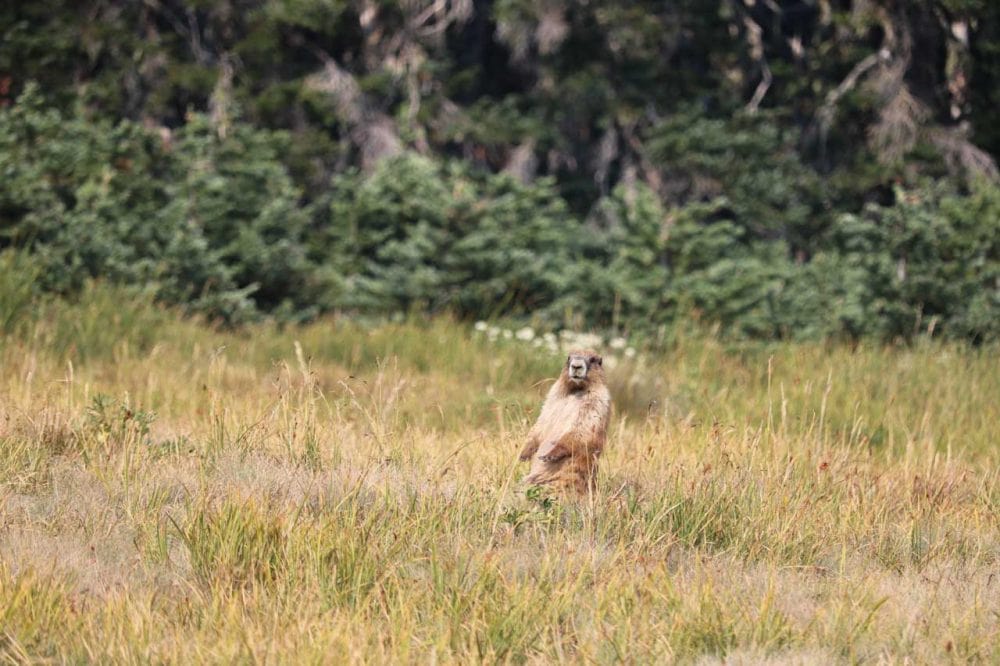
A large type of ground squirrel, marmots are a characteristic mammal of the grasslands and mountain ranges of the United States. They often live in higher-altitude regions, where they’re active during summer and hibernate in the winter months.
These large rodents have short legs, a stout body, a big head and large incisors to eat all kinds of plants. Their color ranges from pale beige to brown to reddish. Several subspecies of marmots exist throughout the United States and you can see mammals in many national parks.
Those include the Alaska marmot (Marmota broweri), hoary marmot (Marmota caligata), yellow-bellied marmot (Marmota flaviventris) and Olympic marmot (Marmota olympus), which is endemic to the Olympic Peninsula in Washington.
In the Northeast, another subspecies of marmot is known as groundhog or woodchuck (Marmota monax).
National Parks Where You Can See Marmots
- Black Canyon of the Gunnison National Park, Colorado
- Denali National Park, Alaska
- Glacier National Park, Montana
- Grand Teton National Park, Wyoming
- Mount Rainier National Park, Washington
- North Cascades National Park, Washington
- Olympic National Park, Washington
- Rocky Mountain National Park, Colorado
- Sequoia and Kings Canyon National Parks, California
- Shenandoah National Park, Virginia
- Yosemite National Park, California
- Yellowstone National Park, Montana, Idaho and Wyoming
- …
4. Pronghorn
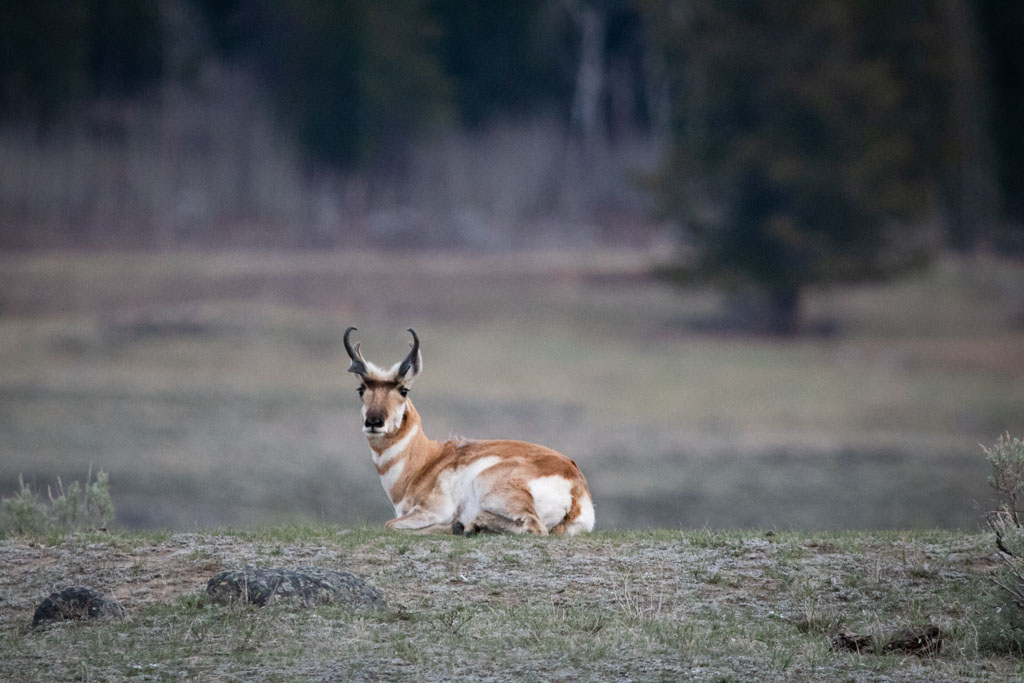
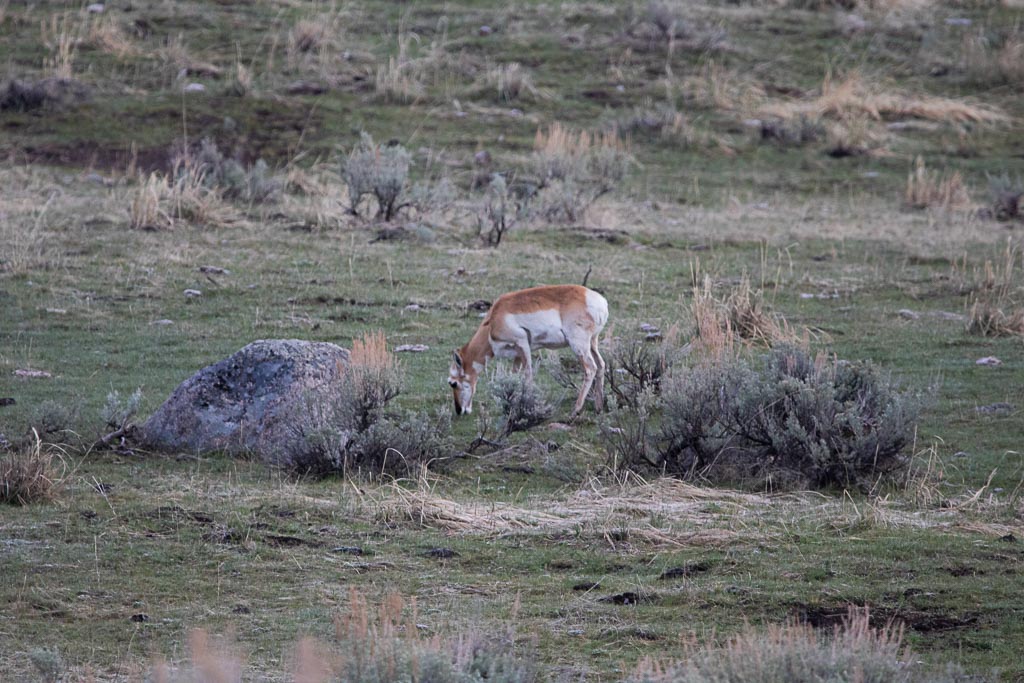
Indigenous to much of the central and western United States, pronghorn are the fastest land animal in the Western Hemisphere. At full speed, they can run as fast as 55 mph (90 km/h). In the entire global animal kingdom, only cheetahs are faster.
Although its Latin name (Antilocapra americana) means “American goat-antelope”, pronghorn are members of neither the goat family, nor the antelope family. They’re a uniquely North American mammal, the only surviving member of the Antilocapridae family.
Their English name refers to their distinct set of horns, which, when viewed from the front, look like a pair of prongs.
Pronghorn prefer expansive open terrain where they can use their speed to the fullest. They live on the plains and plateaus, in the river valleys, sagebrush and grasslands of the American West.
You can see these fascinating mammals in the national parks of the West, from Montana, Wyoming and the Dakotas to Utah, Nevada and Arizona.
National Parks Where You Can See Pronghorn
- Badlands National Park, South Dakota
- Bryce Canyon National Park, Utah
- Grand Canyon National Park, Arizona
- Grand Teton National Park, Wyoming
- Great Basin National Park, Nevada
- Great Sand Dunes National Park, Colorado
- Theodore Roosevelt National Park, North Dakota
- Wind Cave National Park, South Dakota
- Yellowstone National Park, Montana, Idaho and Wyoming
- …
5. Black Bears
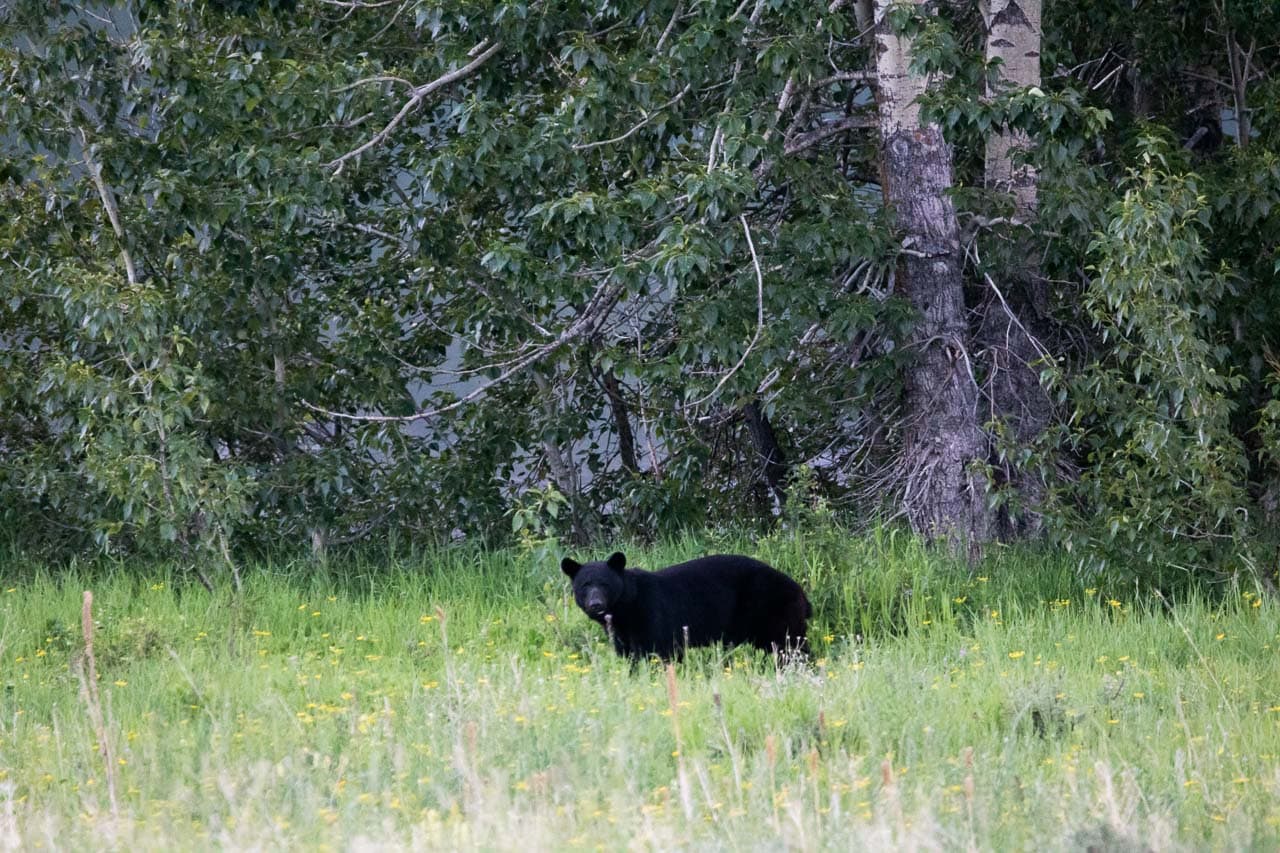
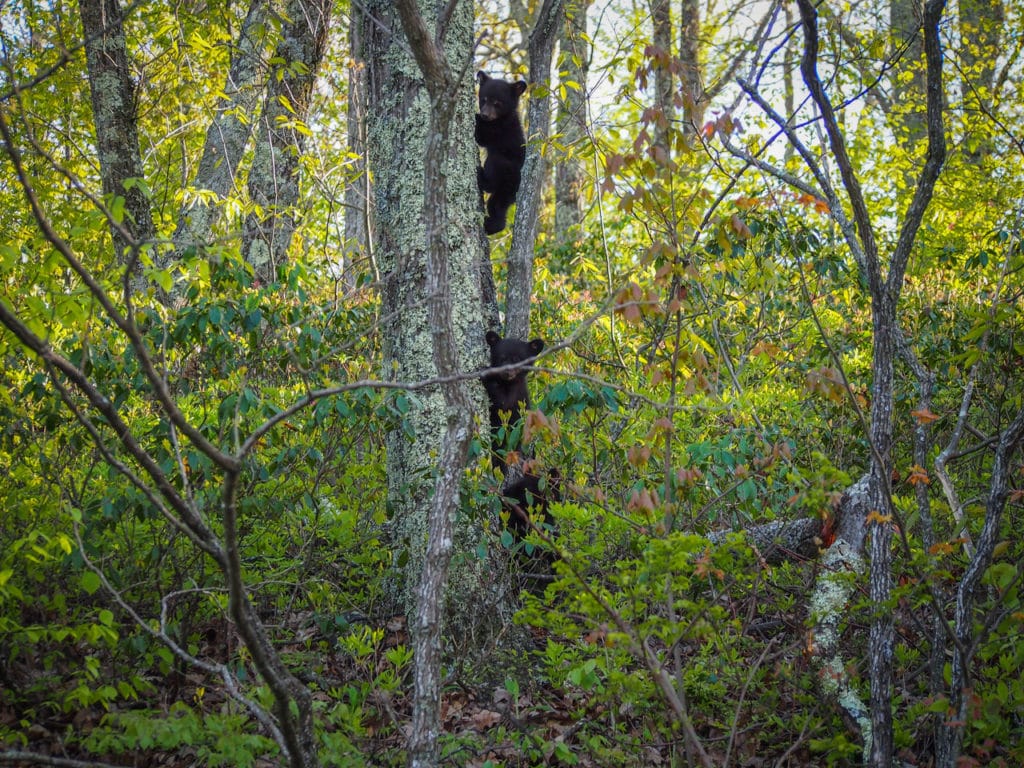
By far the most common bear species in the world, American black bears (Ursus americanus) live and thrive all across North America. They’re residents of hundreds of parks in the U.S., including numerous national parks.
Black bears are exceptionally abundant. Estimates say there are over 300,000 black bears in the contiguous United States and another 100,000 to 200,000 in Alaska, in addition to almost half a million in Canada.
So, if you’ve always wanted to see a black bear in the wild, there are some pretty great opportunities in America’s national parks, from New England and Florida to the Rocky Mountains, Pacific Northwest, California and Alaska.
These relatively small bears are omnivorous and eat almost anything. You can often see them on the edges of woodlands, grasslands and along rivers and streams, where they forage for insects, berries, worms, shoots and small mammals.
National Parks Where You Can See Black Bears
- Denali National Park, Alaska
- Glacier National Park, Montana
- Grand Teton National Park, Wyoming
- Great Smoky Mountains National Park, North Carolina and Tennessee
- Mount Rainier National Park, Washington
- North Cascades National Park, Washington
- Olympic National Park, Washington
- Shenandoah National Park, Virginia
- Yellowstone National Park, Montana, Idaho and Wyoming
- …
6. Red Foxes
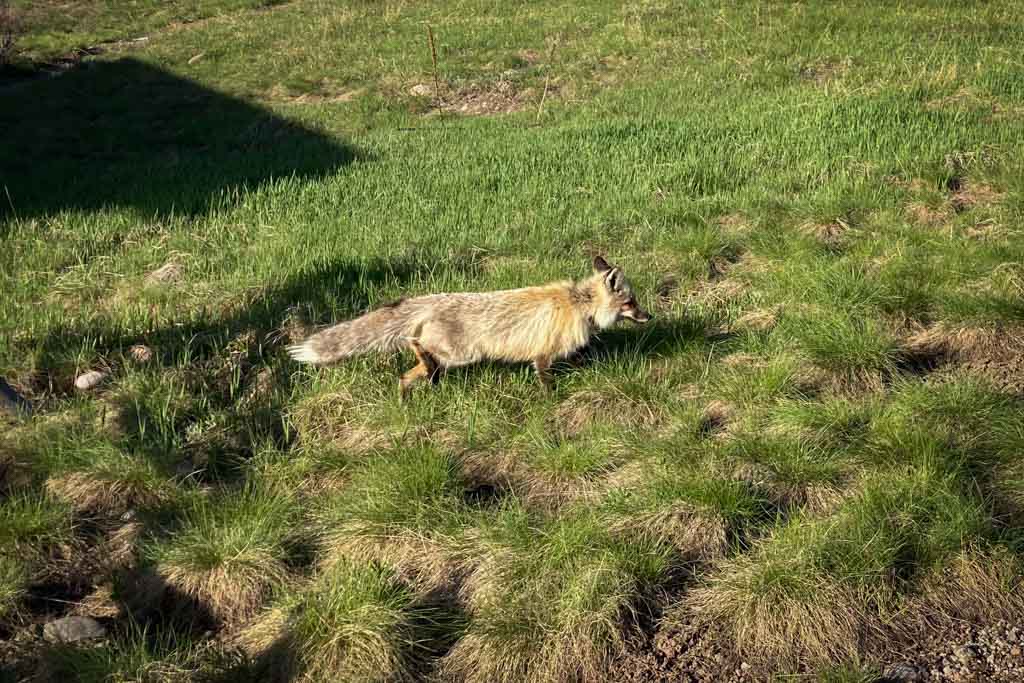
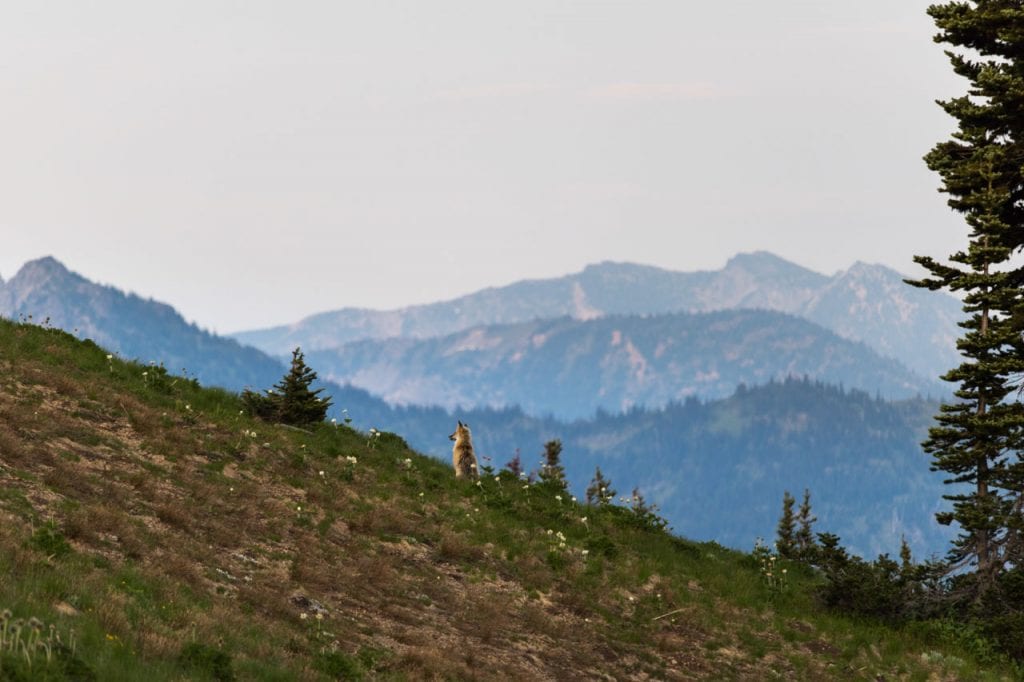
Arguably one of the most beautiful mammals you can see in the national parks, the red fox (Vulpes vulpes) is common across the United States.
Although they’re rather shy, sightings in national parks are plentiful and lucky visitors may see them anywhere from Maine, Minnesota and Montana to Alaska, Nevada and Virginia.
Red foxes are a widely distributed member of the Canidae family. While its most common color is red, as its name implies, these foxes can also be silver, black or a mix of silver and red, which is known as “cross fox.”
National Parks Where You Can See Red Foxes
- Acadia National Park, Maine
- Denali National Park, Alaska
- Glacier National Park, Montana
- Grand Teton National Park, Wyoming
- Great Basin National Park, Nevada
- Isle Royale National Park, Michigan
- Mount Rainier National Park, Washington
- Shenandoah National Park, Virginia
- Yellowstone National Park, Montana, Idaho and Wyoming
- …
7. Prairie Dogs
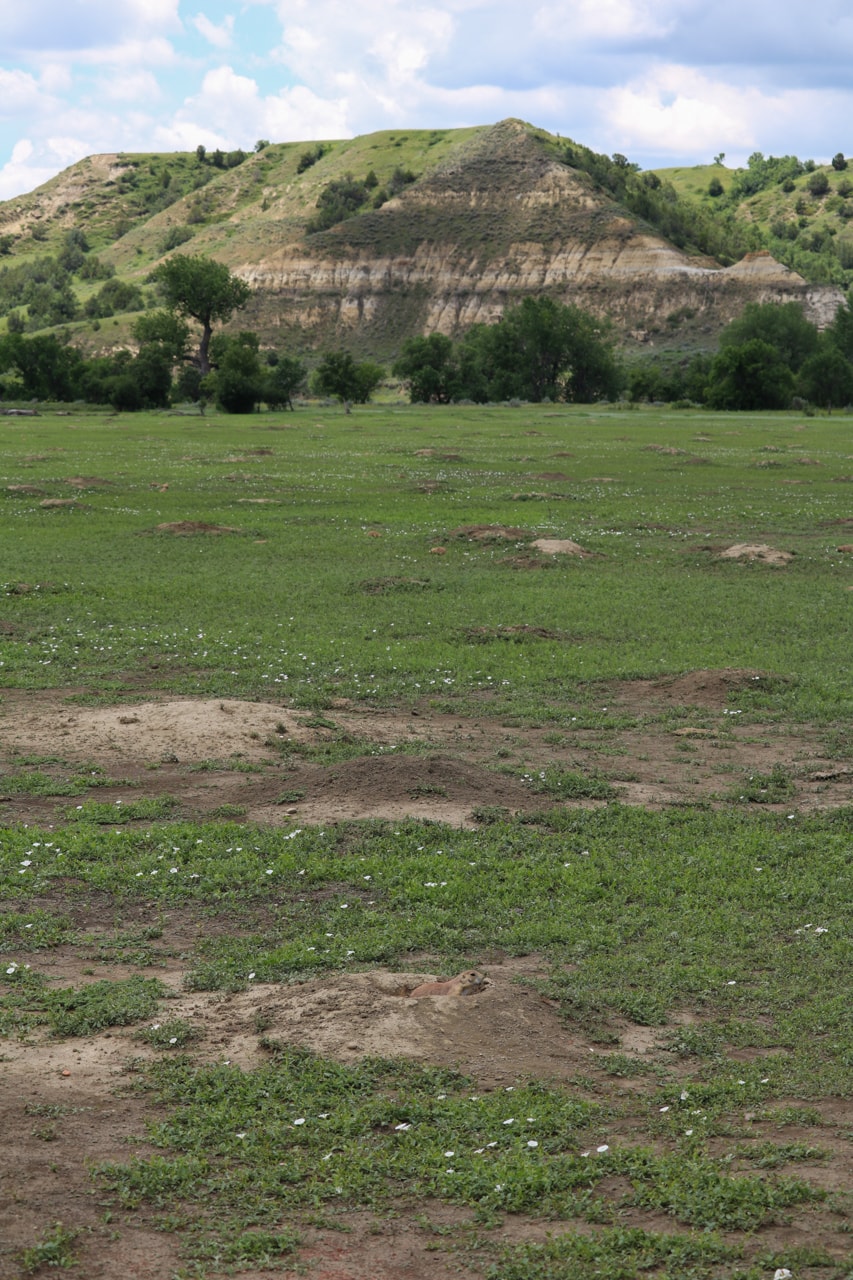
Another iconic mammal that lives in some national park is the prairie dog. A type of ground squirrel, this small rodent is native to North America’s grasslands and plains where they live in extensive burrows.
Their burrows consist of a network of mounds, underground passageways, rooms, entries and exits. Parts of the so-called prairie dog towns are also used by many other animals, which is why prairie dogs are considered a keystone species.
Their burrowing activities are essential for healthy grassland ecosystems, renewing nutrients and topsoil. In addition to being a vital part of the food chain, prairie dogs create living spaces for other animals like burrowing owls, other ground squirrels and snakes.
They’re an iconic species of the American Great Plains, where they typically share their habitat with other plains mammals, such as deer, pronghorn and bison.
Four species of prairie dogs exist in the United States: the Gunnison’s prairie dog (Cynomys gunnisoni), black-tailed prairie dog (Cynomys ludovicianus), white-tailed prairie dog (Cynomys leucurus) and Utah prairie dog (Cynomys parvidens).
National Parks Where You Can See Prairie Dogs
- Badlands National Park, South Dakota
- Theodore Roosevelt National Park, North Dakota
- Wind Cave National Park, South Dakota
- …
8. Bighorn Sheep
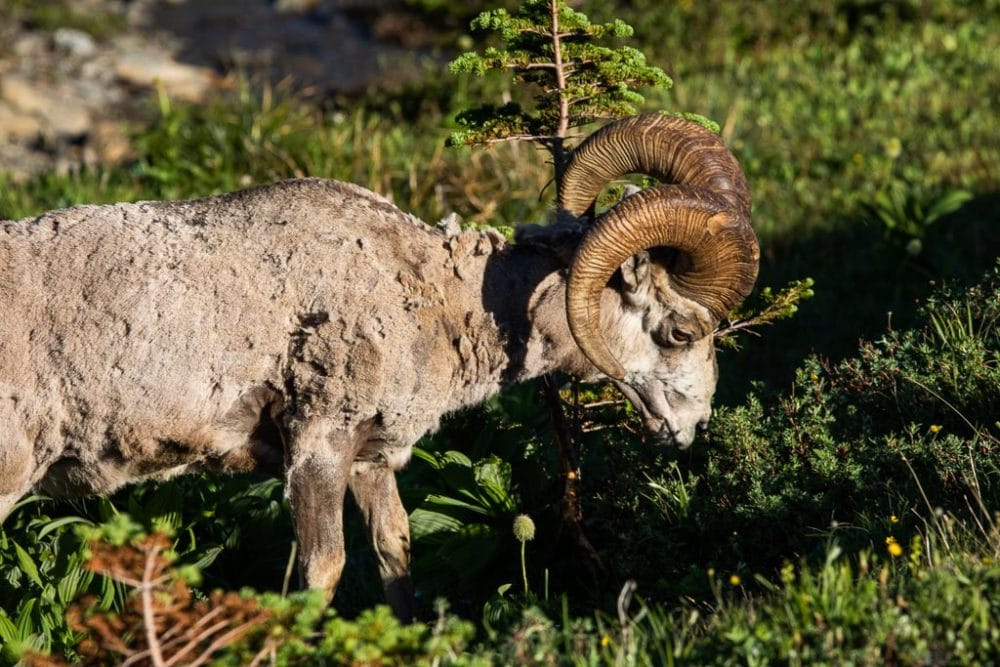
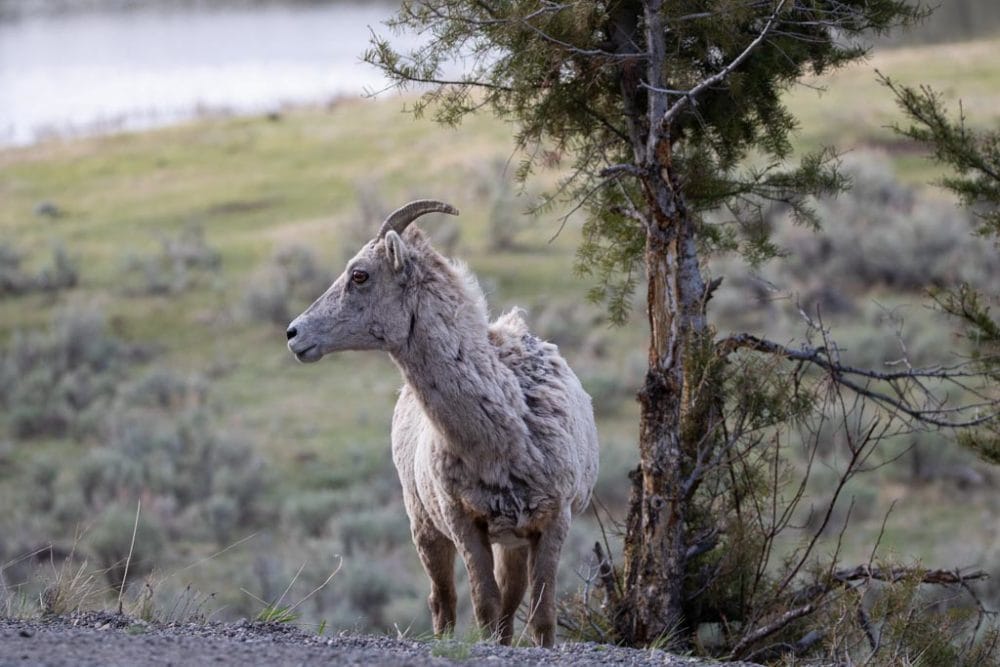
A species of mountain sheep native to North America, bighorn sheep (Ovis canadensis) are a common sight in America’s mountain and canyon country.
By the early 1900’s, however, the entire continent’s population of bighorn sheep was no more than several thousands, the result of overhunting and diseases introduced by European livestock. Conservation efforts, supported by President Theodore Roosevelt, were successful, while reintroductions and the creation of new national parks also helped significantly.
Nowadays, these large sheep, characterized by their huge horns, are found across the western United States. There are a number of subspecies in America, including Rocky Mountain bighorn sheep, Sierra Nevada bighorn sheep and desert bighorn sheep.
You can find these mammals in national parks from the Dakotas, Montana and Wyoming to the canyons of Utah and Arizona.
National Parks Where You Can See Bighorn Sheep
- Arches National Park, Utah
- Big Bend National Park, Texas
- Black Canyon of the Gunnison National Park, Colorado
- Canyonlands National Park, Utah
- Capitol Reef National Park, Utah
- Badlands National Park, South Dakota
- Glacier National Park, Montana
- Grand Canyon National Park, Arizona
- Grand Teton National Park, Wyoming
- Rocky Mountain National Park, Colorado
- Yellowstone National Park, Montana, Idaho and Wyoming
- Yosemite National Park, California
- Zion National Park, Utah
- …
9. Mountain Goats
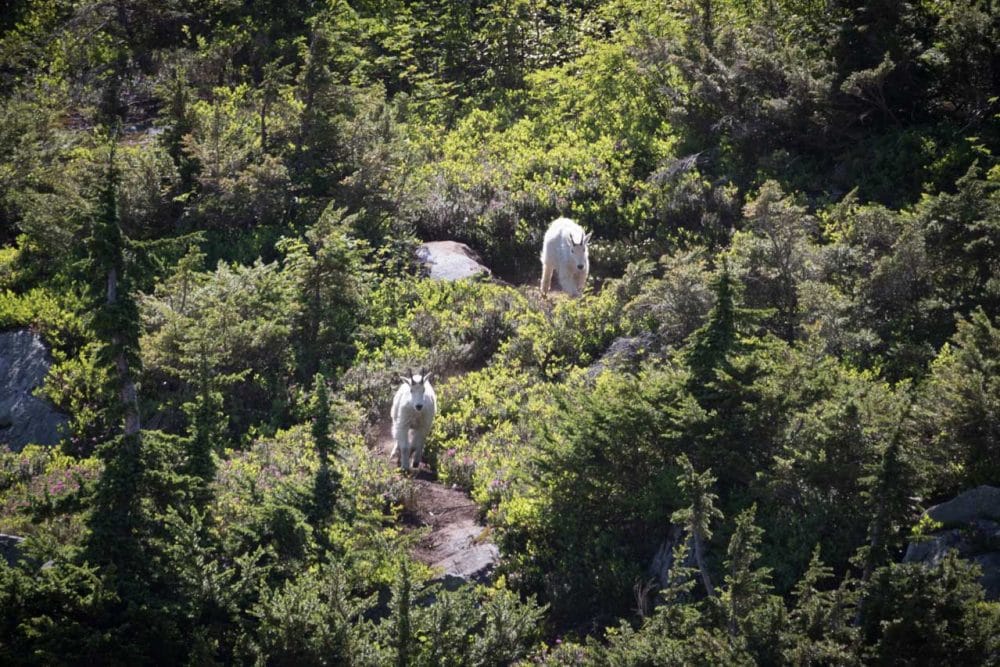
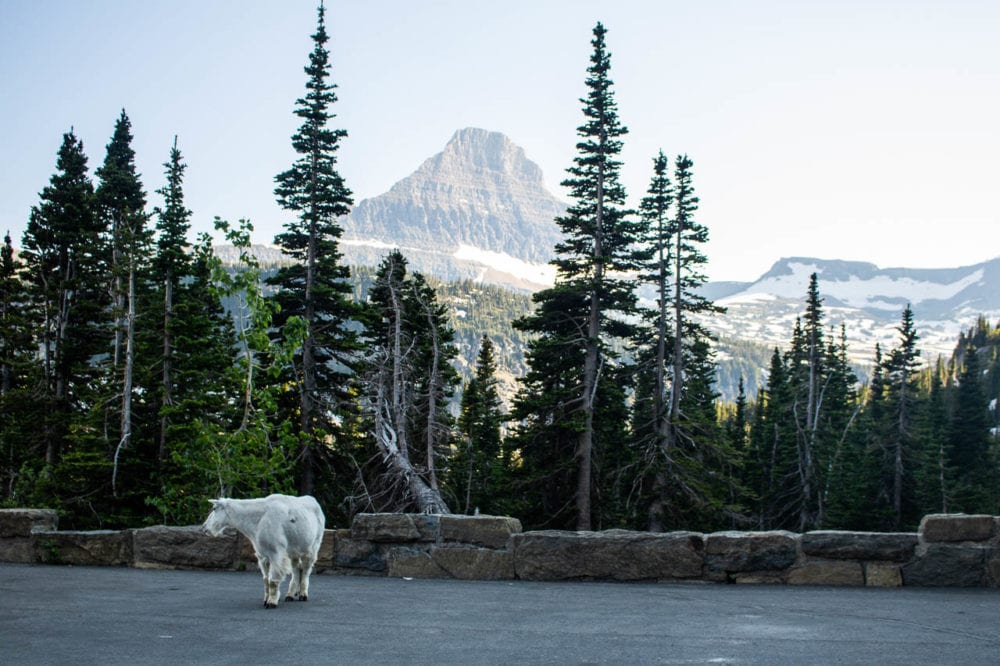
One of the most iconic mammals in the national parks system, mountain goats (Oreamnos americanus) are masters of the mountains.
Thanks to the special shape of their hooves, these even-toed ungulates can effortlessly hop, skip and jump on the steepest of cliffs. In just one leap, they can jump as far as 12 feet. Their thick double-layered coat of white wool and hair offers insulation and warmth in the harshest of climates.
This (sub)alpine mammal’s range extends from the northern Rocky Mountains and northern Cascade Range into southeastern Alaska. Their natural historic range includes five national parks, where you can see mountain goats at high elevations, often above the tree line and as high as 13,000 feet.
National Parks Where You Can See Mountain Goats
- Glacier National Park, Montana
- Glacier Bay National Park, Alaska
- Kenai Fjords National Park, Alaska
- Mount Rainier National Park, Washington
- North Cascades National Park, Washington
Note: You can also see mountain goats in parks like Olympic, Yellowstone and Rocky Mountain, but those regions aren’t part of the animals’ natural range. They’re non-native species at those parks and, often, the National Park Service is actively working to reduce or even eliminate those populations.
10. Humpback Whales
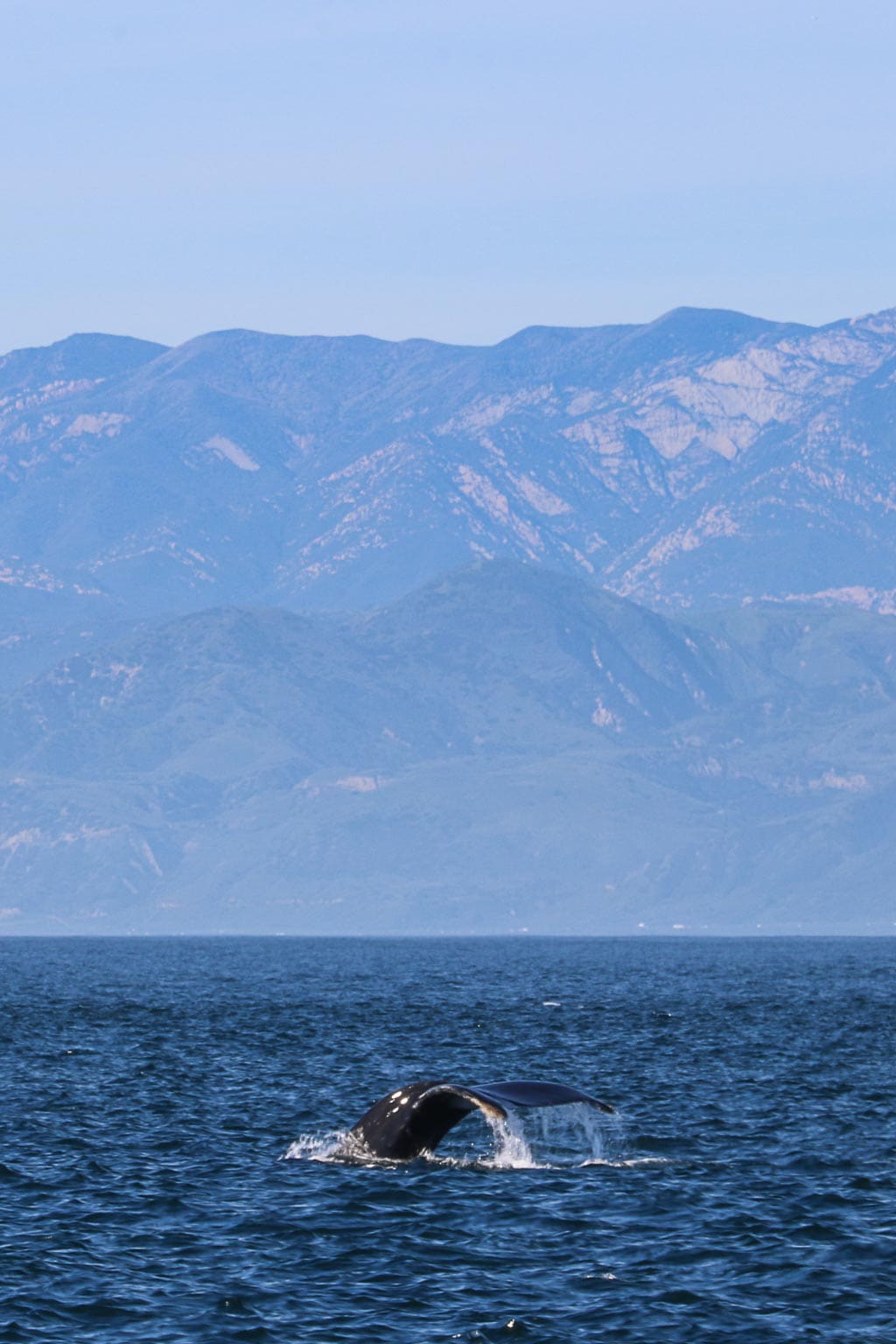
One of the larger species of whales, humpback whales (Megaptera novaeangliae) are especially popular among whale watchers because of their breaching habits, as well as other behaviors at the water’s surface.
These huge marine mammals are present in a number of coastal or island national parks in the Pacific Ocean. (They also live in the Atlantic Ocean, but are uncommon in the national parks on the East Coast.) Humpback whales migrate seasonally between the warm waters of Mexico and the food-rich seas in Alaska.
You can see them from California’s Channel Islands to the coasts of Olympic National Park and the coastal parks in southern Alaska.
National Parks Where You Can See Humpback Whales
- Channel Islands National Park, California
- Glacier Bay National Park, Alaska
- Kenai Fjords National Park, Alaska
- Olympic National Park, Washington
- …
11. Moose
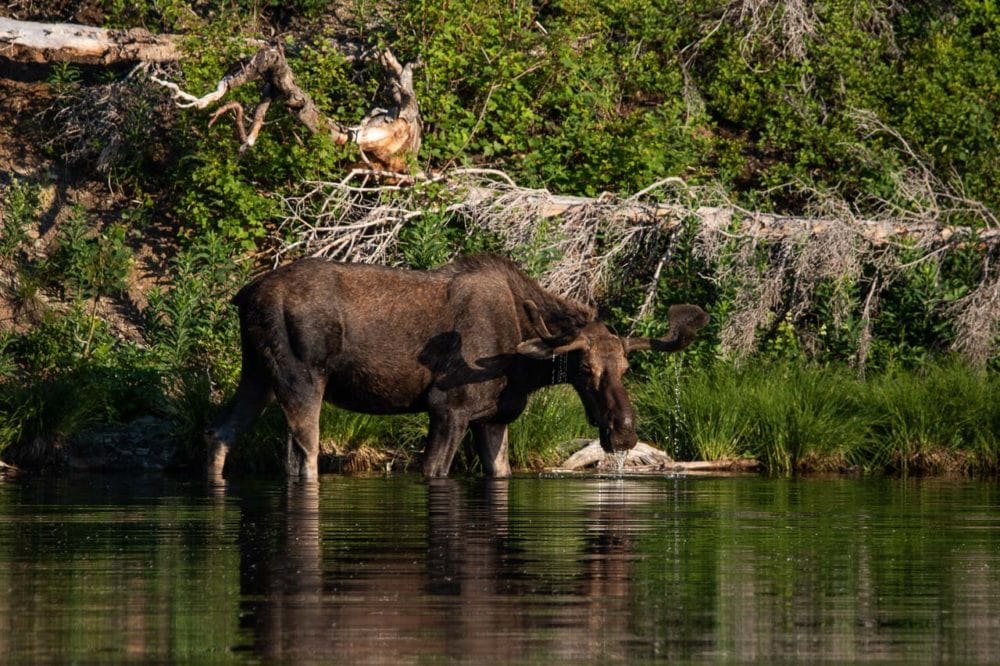
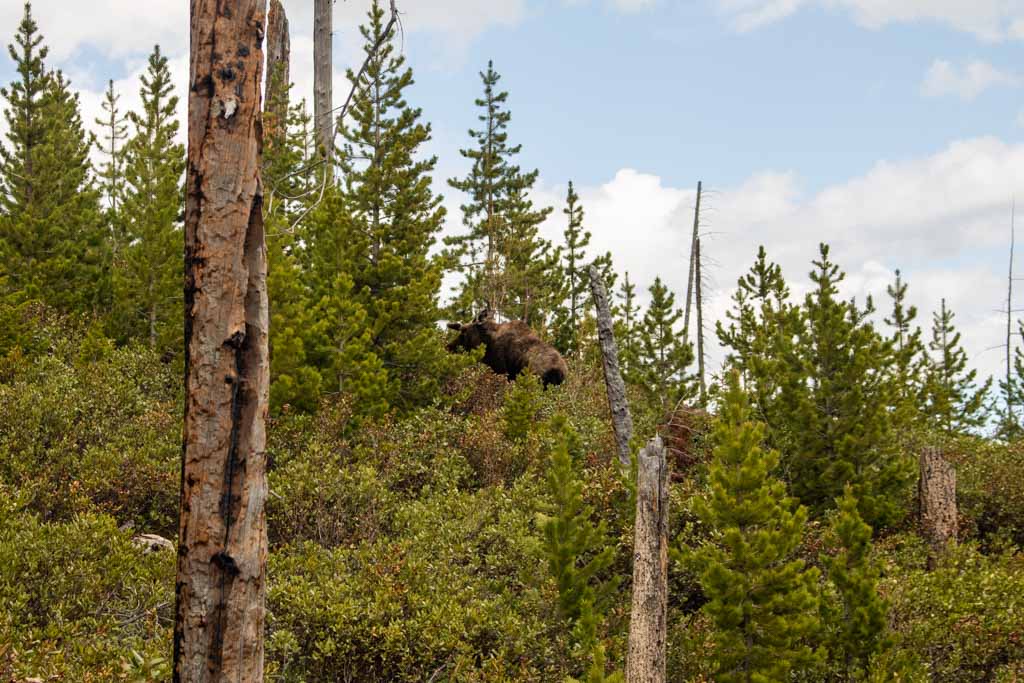
The largest member of the deer family, the moose (Alces alces) is one of the most iconic animals in the colder regions of the Northern Hemisphere.
In the United States, they live in most of the northern states, from New England and New York to Michigan and Minnesota to Wyoming, Montana, Idaho and Alaska. Many of those states happen to have one or more national parks, too, which offer great opportunities to see moose in the wild.
Thanks to their sheer size, long face, clumsy appearance and the giant open-hand-shaped antlers of bulls, moose are one of the most easily recognizable national park mammals.
National Parks Where You Can See Moose
- Denali National Park, Alaska
- Glacier National Park, Montana
- Grand Teton National Park, Wyoming
- Isle Royale National Park, Michigan
- Rocky Mountain National Park, Colorado
- Voyageurs National Park, Minnesota
- Yellowstone National Park, Montana, Idaho and Wyoming
12. Gray Wolves
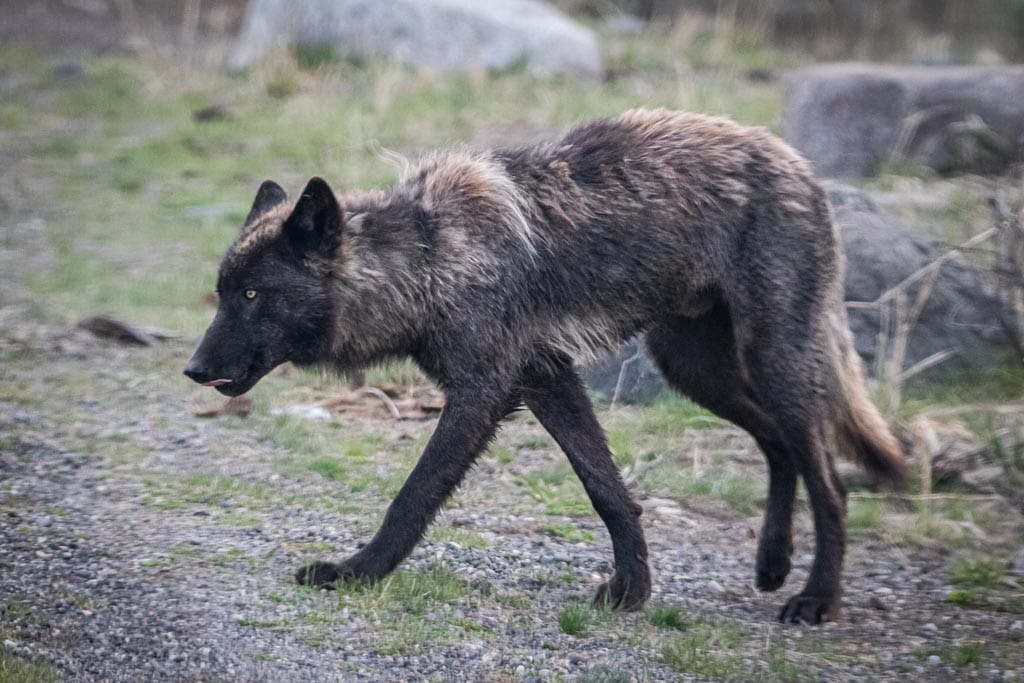
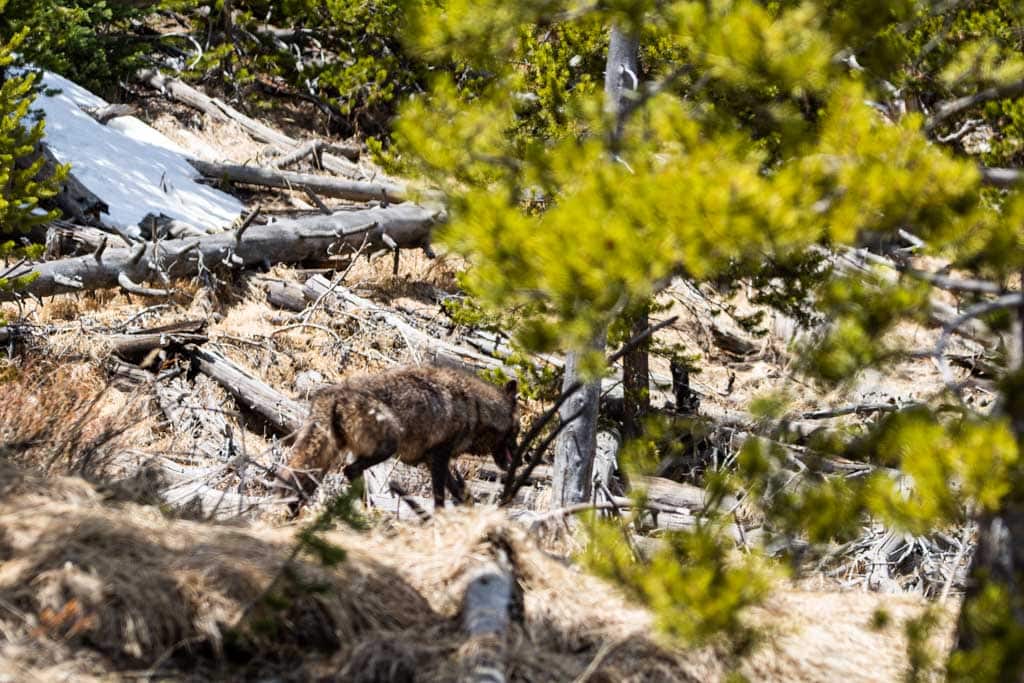
Native to both Eurasia and North America, gray wolves (Canis lupus) are one of the most legendary, almost mythical, animals in the world. These often-misunderstood animals are highly intelligent and social, a keystone and indicator species in their ecosystems.
Although they once roamed much of the continental United States and Alaska, you can now see gray wolves in the wild in only a handful of U.S. states.
Similar to grizzly bears and bison, gray wolves were saved from (regional) extinction by the national parks. Several national parks have and continue to provide a refuge, a safe haven, to wild wolves, which are an undeniable wilderness icon.
Like the snorts of bison, calls of loons and bugles of bull elk, the howling of wolves is one of the wildest—if not the wildest—natural sounds in America.
National Parks Where You Can See Gray Wolves
- Denali National Park, Alaska
- Grand Teton National Park, Wyoming
- Isle Royale National Park, Michigan
- Katmai National Park, Alaska
- Voyageurs National Park, Minnesota
- Yellowstone National Park, Montana, Idaho and Wyoming
13. Grizzly Bears
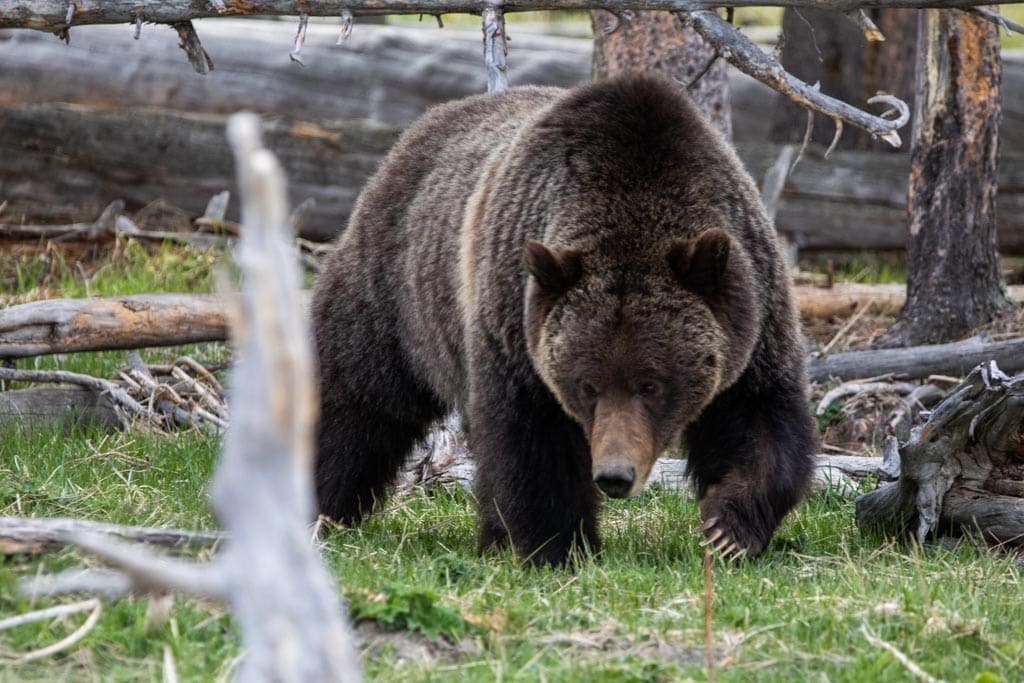
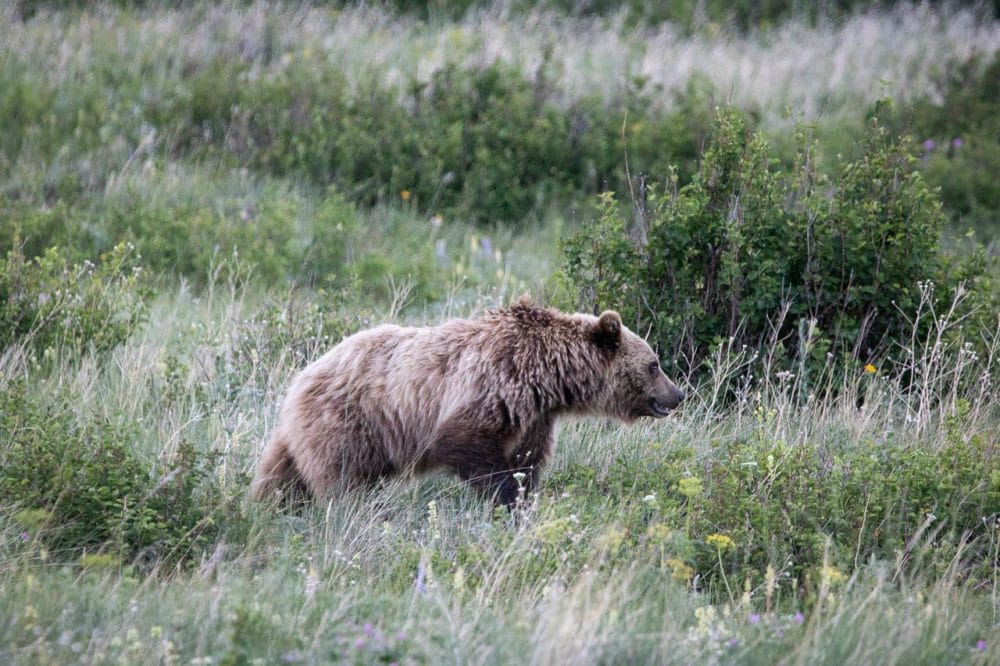
An apex predator—lonely at the top of the food chain—grizzly bears (Ursus arctos horribilis) once roamed the entire western part of the North American continent, including areas on the Great Plains and as far south as northern Mexico.
However, after gradual elimination due to expanding human settlement, the range of these majestic animals is much smaller nowadays. They’re found in the northern Rocky Mountains and southern Alaska, as well as large parts of western Canada.
Their range includes a handful of national parks where you can see these awesome mammals. In fact, in many cases, it were those very national parks that saved the grizzly bears from extinction in certain regions.
Especially Yellowstone and Glacier have played a huge part in the grizzly bear conservation story in the contiguous United States.
A subspecies of the brown bear, grizzly bears are one of the most fearsome mammals in the national parks, a massive animal equipped with razor-sharp claws and huge teeth. However, as imposing as they may be, they deserve our respect, awe and admiration.
They’re easily among the most iconic national park mammals, a symbol of the rugged American wilderness.
National Parks Where You Can See Brown or Grizzly Bears
- Denali National Park, Alaska
- Glacier National Park, Montana
- Glacier Bay National Park, Alaska
- Grand Teton National Park, Wyoming
- Katmai National Park, Alaska
- Kenai Fjords National Park, Alaska
- Yellowstone National Park, Montana, Idaho and Wyoming
- …
14. American Bison
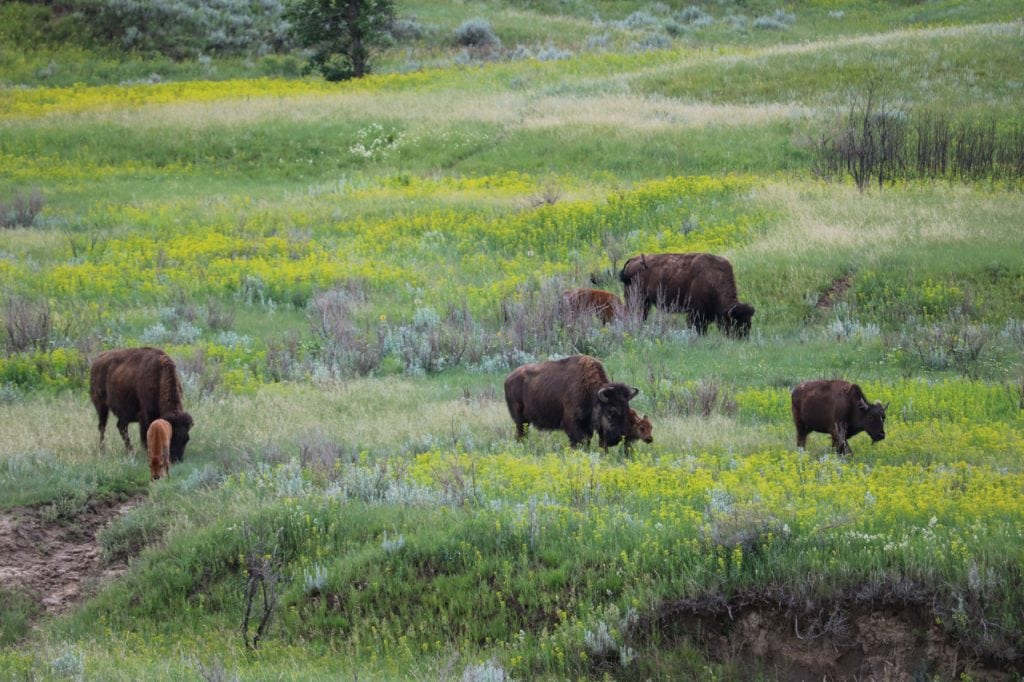
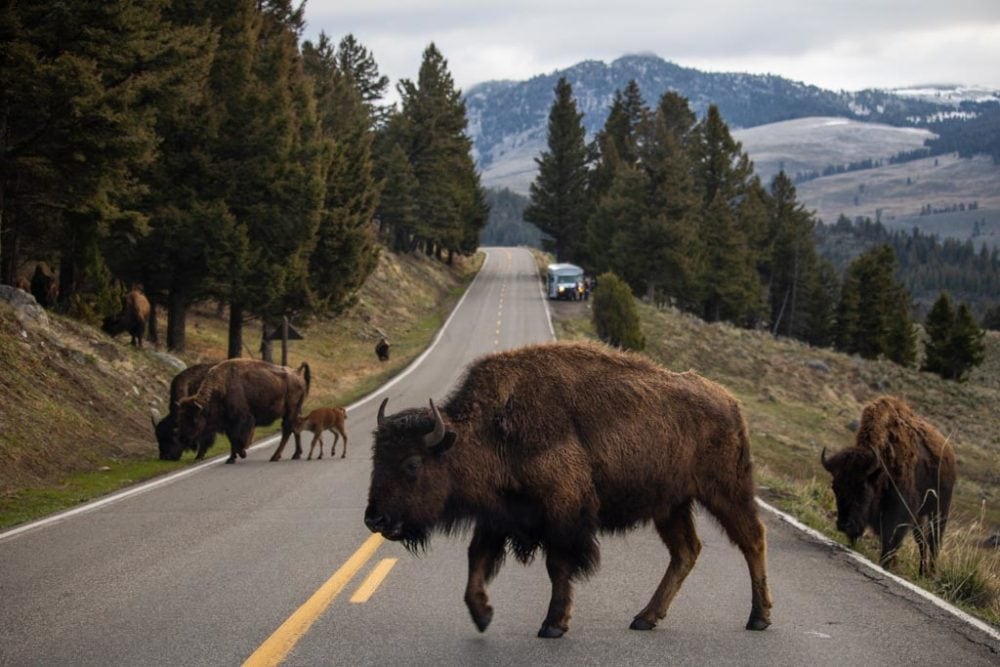
Once roaming the Great Plains by the millions, then almost hunted to extinction, the American bison (Bison bison) is now the national mammal of the United States.
Together with the bald eagle, America’s national bird, the two animals represent the country’s amazing natural beauty, both on land and in the sky.
Bison are the largest land mammal in America, an essential part of American history, a true symbol of the American West and the nation as a whole. They’re also a testimony to the power of nature conservation, epitomized by the national parks, which effectively saved the species from extinction.
Nowadays, the American Plains are home to 17 federally managed bison herds. About 20,000 plains bison are managed as wildlife.
Only 5,000 of them, however, are actually disease-free and unfenced. Most of those live in Yellowstone National Park, which is the only place in the U.S. where bison have lived continuously since prehistoric times.
National Parks Where You Can See American Bison
- Badlands National Park, South Dakota
- Grand Canyon National Park, Arizona
- Grand Teton National Park, Wyoming
- Theodore Roosevelt National Park, North Dakota
- Wind Cave National Park, South Dakota
- Yellowstone National Park, Montana, Idaho and Wyoming
Other Mammals That Live in the National Parks
In addition to the amazing national park mammals above, the parks are home to dozens of other mammals, too.
From marine mammals like dolphins and orcas to riparian mammals like river otters and beavers to predators such as mountain lions, bobcats and ferrets, you can usually at least a couple of mammals when visiting a national park.
- Orcas
- Dolphins
- Sea lions
- Sea otters
- River otters
- North American beavers
- Porcupines
- Jackrabbits
- Skunks
- Dall sheep
- Caribou
- Mountain lions
- Bobcats
- Black-footed ferrets
- White-tailed deer
- Black-tailed deer
- American pikas
- Chipmunks
- Bats
Wildlife Safety in the National Parks
As memorable as it is to see wild mammals in the national parks, it’s important to remember that these animals are, in fact, wild. Some can be very dangerous, too.
This includes the obvious bears and bison, but also elk, mountain goats, moose and many other larger mammals. See the guides below for tips on how to stay safe when recreating among mammals in the national parks.

